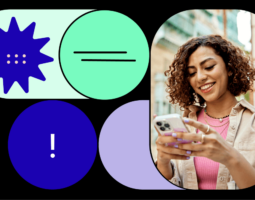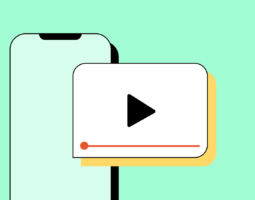
There are a lot of sleek customer support tools on the market, and just about as much terminology to learn for each of them. Two of the most popular are conversational support and help desk software. So what are the differences between them? Do you have to choose one or the other? Let’s dive in.
What Is Conversational Support Software?
Conversational support is a new, messaging-based strategy that focuses on educating and troubleshooting with customers through genuine, person-to-person chats. Its long-term goal is to form strong customer relationships. The only software needed is an omnichannel messaging platform. These platforms make it easy for team members to receive, send, and organize customer messages through a variety of channels. They also offer efficiency features, integrations, and automations that help teams resolve customer support queries faster.
What Is Help Desk Software?
Help desk software, like Zendesk Support, offers a central hub for managing customer support. It provides tools to help you track, prioritize, and solve customer support tickets. It helps organize teams’ processes so they can resolve tickets in a timely manner. It also provides customers with a streamlined experience. It even provides a central hub for solving customer queries sent through channels like email or webchat.
How Do The Tools Compare?
The two types of software have a few clear differences. Conversational support software centers on the customer, and focuses on helping you converse with customers via mobile messaging channels. Help desk software is issue-based, focused on helping you resolve tickets efficiently with tracking and prioritization tools, and by communicating with customers via email and chatbots.
Pros and Cons of Conversational Support vs. Help Desk Software
So what are the advantages and disadvantages of each type of software? Let’s explore in-depth pros and cons of both:
Pros of Conversational Support Software
This software centers around responsive, convenient channels like SMS. (How is SMS responsive? Ninety-eight percent of texts are read, and the average response time for a text is 90 seconds. Email, for comparison, has a 21% open rate and 6% response rate.) It allows for sophisticated message automations based on message content, time received, message channel, and, lately, even message intent. It can also flexibly integrate into your existing tools, like your CRM system or eCommerce platform.
Cons of Conversational Support Software
This software doesn’t emphasize message prioritization, categorization, or escalation to the same degree as help desk software. Also, texting is inherently a short-form channel, so it’s best for fast chats that help customers solve simple queries. Finally, messages aren’t inherently secure; it’s possible for a bad actor to pick up your recipient’s phone and read your texts.
Pros of Help Desk Software
Help desk software offers detailed escalation, categorization, and team productivity analytics. They help boost team efficiency. This software also allows for long-form, contextual communications and attachments. Plus, email is more secure than messaging. (Though by following simple compliance measures, your texting can be secure, too.)
Cons of Help Desk Software
Help desk software focuses on email, which is less responsive. It can take days to resolve tickets. Chatbots, while more responsive, aren’t personalized. Customers usually can’t continue chatbot conversations if they leave your website, while messaging allows them to communicate from anywhere. Finally, it can be challenging to integrate help desk software into your CRM system or eCommerce platform.
What Both Platforms Do Well
Both types of software offer personalization tools, like templates, custom fields, and merge tokens. Both of their primary channels—texting and email—are asynchronous, which means that customers can conveniently respond on their time. Both offer collaborative tools, so team members can have internal conversations behind the scenes as they work to solve queries. Both also enable message routing and assignments, so teams can tackle queries efficiently.
Which Type of Software Is Better?
Conversational support software can be seen as a subcategory of help desk software. Help desk software offers personalization capabilities, which are central to conversational support. What does that mean? One channel isn’t better. In fact, we suggest that you use them together.
How Do The Tools Work Together?
It’s easy to allow both systems to work together. Your omnichannel messaging platform should let you integrate the two platforms, so they can share data and take actions based on one another.
Here’s how an integration lets the two tools work together:
- Keep customer information up to date. As soon as you integrate the two platforms, they’ll start syncing. All new contacts from one platform will show up in the other. Plus, the platforms will keep updating automatically. That means that when you add new contacts or adjust contact information in your conversational support platform, the changes will be reflected in your help desk platform, and vice versa.
- Start conversational support chats within your help desk platform. You’ll also be able to engage with customers anywhere in your help desk platform. For example, you can start conversational support chats while looking at customer history. That way, you don’t have to switch from your main help desk platform to get the benefits of conversational support. You can create items like SMS drip campaigns from within your help desk platform, too.
- Manage texts alongside emails. Your team can read and respond to inbound texts alongside emails, with a tab that keeps each channel separate but close at hand. From there, you have access to conversational support features for all your messaging needs, like assignments, tags, and templates.
Ultimately, conversational support and help desk software are two powerful tools that work better together.
Want to learn more about conversational support? Download our free guide.








